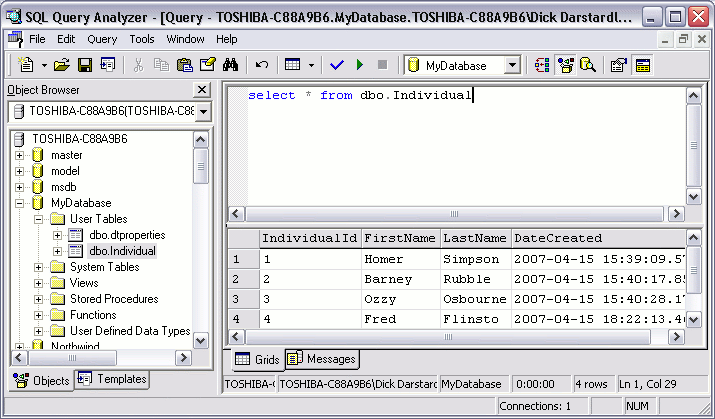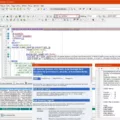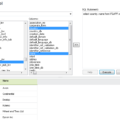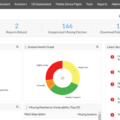Are you looking to optimize the performance of your Microsoft SQL Server? If so, then you’ve come to the right place! In this blog post, we’ll be discussing how to effectively tune your SQL Server for optimal performance.
First and foremost, it’s important to ensure that your SQL Server is properly configured. This means setting up the correct memory allocation, storage settings, and other configuration options for your specific use case. It also means ensuring that your data is stored in an organized manner and that all relevant indexes are created and maintained as needed.
Once you have the basics down, it’s time to start tuning your queries for peak performance. This involves optimizing query execution plans by utilizing available statistics and making sure those plans are optimized for the best possible results. To do this, you can employ a few different techniques such as using table hints, ensuring appropriate index usage, or utilizing proper join techniques. Additionally, it’s important to check if any of your queries could be rewritten in a more efficient way.
Finally, once you have completed all of these steps, it’s important to monitor the performance of your SQL Server over time to ensure that there are no bottlenecks or unexpected drops in performance. To do this effectively, consider using tools such as SQL Server Profiler or PerfMon (Performance Monitor), which will allow you to track metrics such as CPU utilization, disk I/O usage, query execution time, and more.
By taking all of these steps into consideration when tuning your SQL Server for peak performance, you can ensure that you get the most out of your server setup!

Improving Performance in SQL Server
There are a number of ways to improve performance in SQL Server. The first step is to ensure that your database design is efficient and well-structured. This includes choosing an appropriate data type for each column, avoiding NULL values in fixed-length fields, and avoiding the use of the asterisk (*) in SELECT statements. Additionally, it’s important to create clustered and non-clustered indexes on your tables, as these can significantly improve query performance.
Another way to improve performance is through the use of stored procedures, which can help reduce the number of round trips between applications and the database by compiling multiple SQL statements into a single execution plan. Additionally, using EXISTS instead of IN can often result in improved query performance when dealing with large datasets. Finally, it’s important to keep clustered indexes small since they will be scanned when a query runs; large clustered indexes can cause poor query performance.
Performance Tuning in SQL
Performance tuning in SQL is an essential part of database management. It involves optimizing the queries used to access and manipulate data in order to ensure maximum efficiency and performance. Here are some tips for optimizing your SQL queries for performance:
1. Define business requirements first – This will help you determine the specific data that needs to be queried, and allow you to create a more efficient query.
2. Select fields instead of using SELECT * – When you use SELECT *, the query will return all columns from the table which can slow down performance. Instead, select only the columns that are needed for your query.
3. Avoid SELECT DISTINCT – Using this statement will scan through all rows of a table which can decrease query performance significantly. Instead, use GROUP BY to group results by one or more columns.
4. Create joins with INNER JOIN (not WHERE) – Joins allow you to combine data from multiple tables into one result set which can improve performance and simplify complex queries. Inner joins should be used instead of WHERE clauses when joining tables together as they are much faster and more efficient.
5. Use WHERE instead of HAVING to define filters – The WHERE clause is usually faster than HAVING since it applies filters before returning any results whereas HAVING applies filters after results have been returned from the query execution plan so it takes longer to execute the query overall.
6. Use wildcards at the end of a phrase only – Wildcards are useful for searching partial matches but they should only be used at the end of phrases as they can slow down your queries if used at the beginning of phrases due to having to scan through more records in order to find an exact match (if possible).
Handling Performance Issues in SQL Server
Performance issues in SQL Server can be caused by a number of different factors. To handle these issues, it is important to first identify the source of the problem. To do this, you should check for any recent changes to your server or database and review error logs. Additionally, you should monitor usage metrics such as CPU, memory, and disk I/O.
Once the cause of the issue has been identified, steps can be taken to address it. Common strategies include reconfiguring hardware resources, optimizing queries and indexes, or tuning server configuration options such as cost threshold for parallelism. Additionally, automated maintenance tasks such as DBCC CHECKDB should be regularly scheduled to ensure that any potential corruption is quickly addressed.
Finally, if necessary, more advanced techniques such as query store and extended events can be used to diagnose and resolve performance issues in SQL Server. With these tools, it is possible to get detailed information on query plans and execution times which can provide valuable insight into resolving performance bottlenecks.
Monitoring Performance Tuning in SQL Server
Monitoring performance tuning in SQL Server is a critical part of ensuring the best possible performance for your database. To do this, you’ll want to use SQL Server Profiler, which is a built-in tool that allows you to collect and analyze traces from your database. With SQL Server Profiler, you can capture various events such as deadlock graphs, showplan XML events, showplan XML statistics profile events, and more. Once these traces have been collected, they can then be analyzed to identify any potential areas of concern or improvement in terms of query performance and overall database health. Additionally, you can use the Performance Monitor tool to monitor real-time server performance metrics such as CPU usage and memory utilization. By using these tools together, you can get a better understanding of how your system is performing and make informed decisions about how to optimize it for better performance.
Key Performance Indicators in SQL Server
Key Performance Indicators (KPIs) for SQL Server are essential for monitoring the performance of databases and ensuring that queries are running efficiently. KPIs can include:
1. T-SQL Queries: Monitor the duration, number of executions, CPU usage, and logical reads per query execution.
2. Buffer Cache: Monitor the buffer cache hit ratio to ensure that data is being loaded from the memory instead of the disk.
3. Table-related Resources: Monitor table locks, number of rows accessed, and total space used in tables to identify any possible resource contention issues.
4. Locks: Monitor lock waits, deadlocks, and lock timeouts to identify any locking or blocking issues in the system.
5. Resource Pools: Monitor resource pool performance such as CPU usage, memory usage, and disk I/O to identify any resource bottlenecks in the system.
6. Indexes: Monitor index utilization to ensure that indexes are being used effectively for query optimization.
7. Connections: Monitor connection activity to identify any potential connection issues in the system such as excessive open connections or excessive failed logins.
Tools Used for SQL Server Performance Tuning
SQL Server performance tuning requires the use of several specialized tools in order to ensure optimal performance. The most commonly used tools are: SQL Server Profiler, Database Engine Tuning Advisor (DTA), Dynamic Management Views (DMVs), SQL Trace Stored Procedures, Wait Statistics, Extended Events, Activity Monitor, and Index Tuning Wizard.
SQL Server Profiler is a tool used to monitor SQL Server activity and identify potential areas of performance improvement. It allows you to view the activity as it occurs, which can be useful in identifying poorly-performing queries or uncovering long-running transactions.
Database Engine Tuning Advisor (DTA) is a tool that helps you identify and create indexes and other database objects such as statistics that improve query performance. It provides recommendations for creating indexes, statistics, and partitions based on workloads that you supply.
Dynamic Management Views (DMVs) provide insight into the current state of the server environment at any given time. They allow you to quickly troubleshoot issues related to performance and query optimization by providing detailed information about server resources such as CPU usage, memory usage, and disk I/O utilization.
SQL Trace Stored Procedures are used to capture events that occur during the execution of an application or batch process. They can help identify long-running queries or queries with high resource utilization which can then be optimized for better performance.
Wait for Statistics provides insight into how long tasks have been waiting for resources in order to complete their work. This can help identify applications or users that are causing a bottleneck in system performance due to their resource utilization levels.
Extended Events are used to collect fine-grained information about specific events within the server environment such as login attempts or deadlocks which can then be analyzed for potential areas of improvement in application code or query optimization techniques.
Activity Monitor is a graphical tool for monitoring overall system resource utilization across multiple sessions and databases on an instance of SQL Server. It provides insight into current workloads and allows you to quickly troubleshoot potential areas of concern with regard to resource utilization levels across multiple sessions or databases.
Index Tuning Wizard is a tool that helps you create indexes based on workloads that you supply in order to optimize query performance within your database environment. It provides recommendations regarding index creation based on supplied workloads which can then be implemented within your database environment in order to improve query performance over time.
Identifying Causes of SQL Server Slowness
To check SQL Server slowness, there are several steps you can take. The first step is to generate an actual execution plan, which will help you identify any potential issues with your queries. You can also monitor resource usages, such as CPU and memory utilization, to identify any bottlenecks in your system. Additionally, the Database Engine Tuning Advisor can be used to tune your database for better performance.
You can also use SQL dynamic management views (DMVs) to find slow queries. There are also query reporting applications and SQL Azure Query Performance Insights that can provide insights into the performance of your database. Finally, you can use SQL Server Extended Events to trace specific events and identify any issues with query execution time.
By taking these steps, you should be able to identify and address any slowness issues within your SQL Server environment.
Ways to Improve Database Performance
Improving database performance is a complex task, and there are several strategies you can use to make your database faster and more efficient. Here are some of the most effective ways to improve DB performance:
1. Check your Database Server: Make sure you have the most up-to-date server architecture, hardware, drivers, and operating system for your database. This will ensure that the server is able to handle the demands of the database.
2. Improve Indexing Strategies: Well-structured indexes can help speed up queries by reducing the amount of data that needs to be scanned for each query. Make sure your indexing strategy is efficient and up-to-date, and consider using advanced techniques such as clustering or partial indexing if it suits your needs better.
3. Identify Access to Database: Identify who has access to your database and what type of access they have. Unnecessary access can slow down performance, so make sure only those who really need it have access.
4. Evaluate Connection Capacity: Make sure that any external connections or interfaces are able to handle the load placed on them without affecting performance. If necessary, upgrade their capacity or reduce their usage when possible in order to improve performance.
5. Optimize Queries: Make sure all queries are optimized as much as possible before running them on the database system; this will reduce unnecessary strain on resources and allow them to run faster and more efficiently.
6. Database Performance Resources: Learn about best practices in improving DB performance from other experts by reading books, blogs, and articles on the subject, or attending seminars or webinars related to optimizing databases for better performance.
Common Performance Issues in SQL Server
Common performance issues in SQL Server can be divided into three main categories: hardware-related, query optimization-related, and settings-related.
Hardware-related performance issues typically occur when the underlying server does not have enough resources to handle the load. For example, insufficient memory or disk I/O can cause slowdowns and timeouts as queries require more time to complete. Additionally, CPU utilization may become an issue if multiple queries are running simultaneously.
Query optimization-related performance issues arise when queries are poorly written or take too long to execute. This can be caused by suboptimal query plans, lack of indexes, or other inefficient coding practices. Additionally, poorly written triggers and stored procedures can slow down the entire system.
Settings-related performance issues usually stem from the incorrect configuration of the SQL Server instance or database settings. For example, incorrect TempDB settings can cause severe bottlenecks in your system as it tries to keep up with demanding workloads. Additionally, incorrect collation settings can lead to inefficient query execution plans and poor performance.
Overall, proper monitoring and tuning of your SQL Server environment are essential for achieving optimal performance levels. By keeping an eye on hardware resources and settings configurations you can identify potential areas of improvement before they become major problems. Additionally, writing efficient queries and proactively addressing any query optimization issues should help keep your system performing at its best!
Conclusion
In conclusion, SQL Server is an incredibly powerful and versatile database management system that provides businesses with the ability to store and manage data on a large scale. It is capable of handling complex queries quickly, making it ideal for applications that require fast responses or transactions. Additionally, its scalability makes it suitable for any size of business. The combination of its performance and scalability makes it an excellent choice for businesses looking to improve their database performance.








